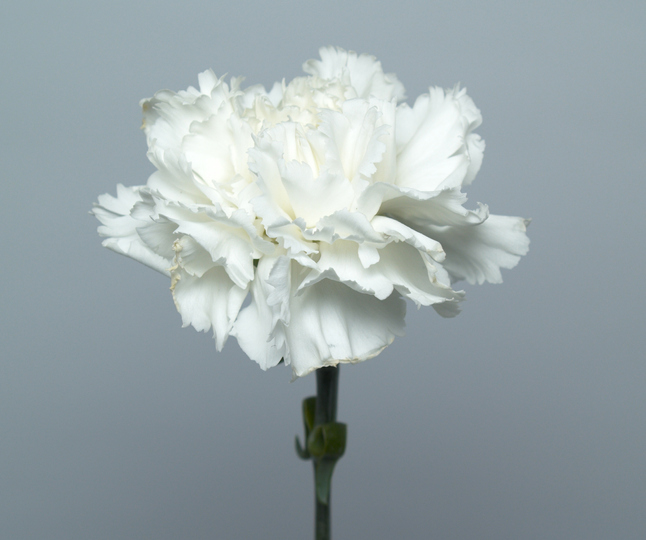Wracking your brain to come up with the mother of all Mother’s Day celebrations? Reflecting on the origins and tumultuous history of the holiday may yield a few ideas … and surprises, says Canberra author, Maura Pierlot.
Many of us associate Mother’s Day with greeting cards, flowers, perhaps chocolates or a day off cooking. But gifts were not what West Virginian founder, Anna Maria Jarvis had in mind for the holiday. In 1908, Jarvis arguably celebrated the first Mother’s Day when she sent 500 white carnations to her local Episcopal church to honour the life and work of her mother and all mothers. In the years that followed, Jarvis worked tirelessly to make the day official, mounting a zealous letter-writing and promotional campaign backed by the business community. Her efforts paid off on 9 May 1914, when US President Woodrow Wilson proclaimed Mother’s Day as “a public expression of our love and reverence for the mothers of our country”.
With a background in advertising, Jarvis partnered early with florists for Mother’s Day celebrations, only to actively campaign against them (and greeting card manufacturers) when the holiday became commercialised in the 1920s. For Jarvis, buying gifts undermined the true spirit of Mother’s Day, the holiday she had helped create but was quickly losing control of. However, she found it difficult to let go. According to Katharine Lane Antolini, author of Memorialising Motherhood: Anna Jarvis and the Struggle for the Control of Mother’s Day, Jarvis’s self-identity was tied to the holiday, evident in her standard signature: ‘Anna Jarvis, Founder of Mother’s Day’.
Although Jarvis can take credit for popularising the holiday, the idea had been germinating for years prior. In 1870, abolitionist and author of the Battle Hymn of the Republic, Julia Ward Howe, urged women to unite for a Mother’s Peace Day, later called the Mother’s Day Proclamation. Many others laid claim to the idea, including Frank Hering, who in 1904 appealed to his fraternal organisation to set aside a day of homage to mothers. Even Jarvis’s peace activist mother, Ann Maria Reeves Jarvis, had long prayed for a day that commemorated the service of mothers for their families and in the community – a prayer that her daughter would answer in slightly altered form. According to Antolini, Ann Jarvis’s original idea was to honour all mothers, mainly by mothers helping out mothers less fortunate than they were. Daughter Anna, who did not have children, opted instead for a day of thanks to mothers from a child’s perspective. Other countries followed suit including Australia where, in 1924, Sydneysider Janet Heyden campaigned for a day to honour mothers. Heyden sought gift donations for aged mothers, many having lost their husbands and sons in World War I, in the local hospital she routinely visited.
Flash forward to today when Mother’s Day is celebrated in many ways, not surprising given that motherhood is many things: exhausting, awe-inspiring, joyful, challenging, consuming, heartbreaking, life-changing. So what precisely are we celebrating on this national day for mothers? And who should be celebrating – the mothers for all they have done or their children for whom they have done it? In modern parlance, Mother’s Day has morphed into a sliver of family time, whether spontaneous or enforced. If a mother asks for peace and quiet, or heads away with friends for the weekend, is this contrary to the spirit of the day?
This Sunday (10 May), many mothers will enjoy breakfast in bed. Others will be treated to a (takeaway) restaurant meal or a floral bouquet – the go-to options with the added bonus of supporting local businesses. There will undoubtedly be plenty of phone calls or Skype/Zoom sessions from family far away. Some children will craft their own gifts and mementos to express appreciation. Others may simply pick flowers from the front garden, or give their mothers a hug. Whether you’re paying tribute to your mother, living or in memory, or being feted by your own children, there is no right way to celebrate Mother’s Day. In today’s challenging times, perhaps it’s worth revisiting the original community service aspect of the day – mothers helping mothers less fortunate than them.
Regardless of how you celebrate Mother’s Day, spare a moment for Anna Jarvis who, after decades fighting a futile legal battle to have the holiday abolished, died penniless. She was buried alongside her mother but received no memorial or white carnation, the flower she intended to be the holiday’s emblem. Why this bloom? In her words: “Its whiteness is to symbolise truth, purity and broad charity of motherly love; its fragrance, her memory, and her prayers. The carnation does not drop its petals, but hugs them to its heart as it dies, and so, too, mothers hug their children to their hearts, their mother love never dying.” (1)
ABOUT THE AUTHOR: Maura Pierlot is a Canberra author and playwright (and mother of three young adults).
(1) Marlene Wagman-Geller, Women Who Launch: Women Who Shattered Glass Ceilings, Mango Publishing Group, 2018.



